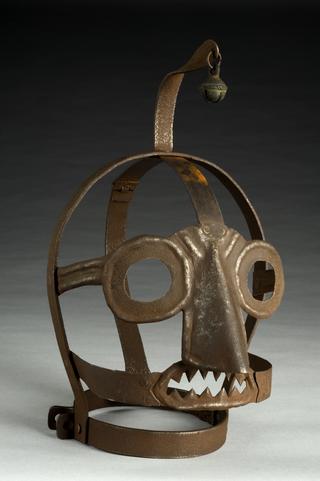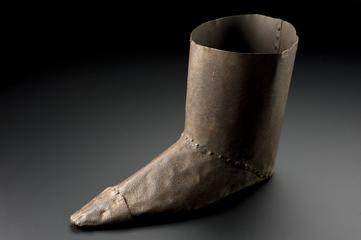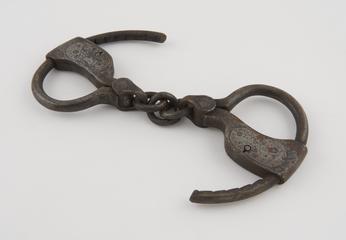




Hangman's rope, English, allegedly used in the hanging of Elizabeth Berry and Alfred Scandrett. Originally dated 1810-1824 and additionally associated with the execution of John Thurtell in 1824, stylistically this rope appears to be from a later period and Berry and Scandrett were executed in 1887 and 1888 respectively.
This rope is looped through a metal ring to form a noose. It is said to have been used in the hangings of Elizabeth Berry and Alfred Scandrett. Berry murdered her 11 year-old daughter in 1887 by poisoning her tea with creosote. Scandrett killed an old man in 1888 with an axe during a burglary.
Hangmen began using William Marwood’s ‘long drop’ technique of hanging by the 1880s. This allowed the prisoner to fall a controlled distance, ending in a sharp jerk of the rope. This broke the neck of the prisoner and was more humane. It was considered quicker than former techniques such as the ‘short drop’. This could leave prisoners enduring prolonged strangulation before death. Early experiments of the ‘long drop’ technique resulted in the occasional decapitation of a prisoner. The passing of the Capital Punishment Amendment Act in 1868 ended the spectacle of the public hanging. Both Berry and Scandrett were hanged behind prison walls. Capital punishment was abolished in Britain in 1964.
Details
- Category:
- Wellcome (general)
- Collection:
- Sir Henry Wellcome's Museum Collection
- Object Number:
- A127721
- Materials:
- eye, brass, stopper, leather and rope, hemp
- Measurements:
-
overall: 3800 mm 19 mm, .926kg
- type:
- hangman's rope
- credit:
- Tussaud, John




